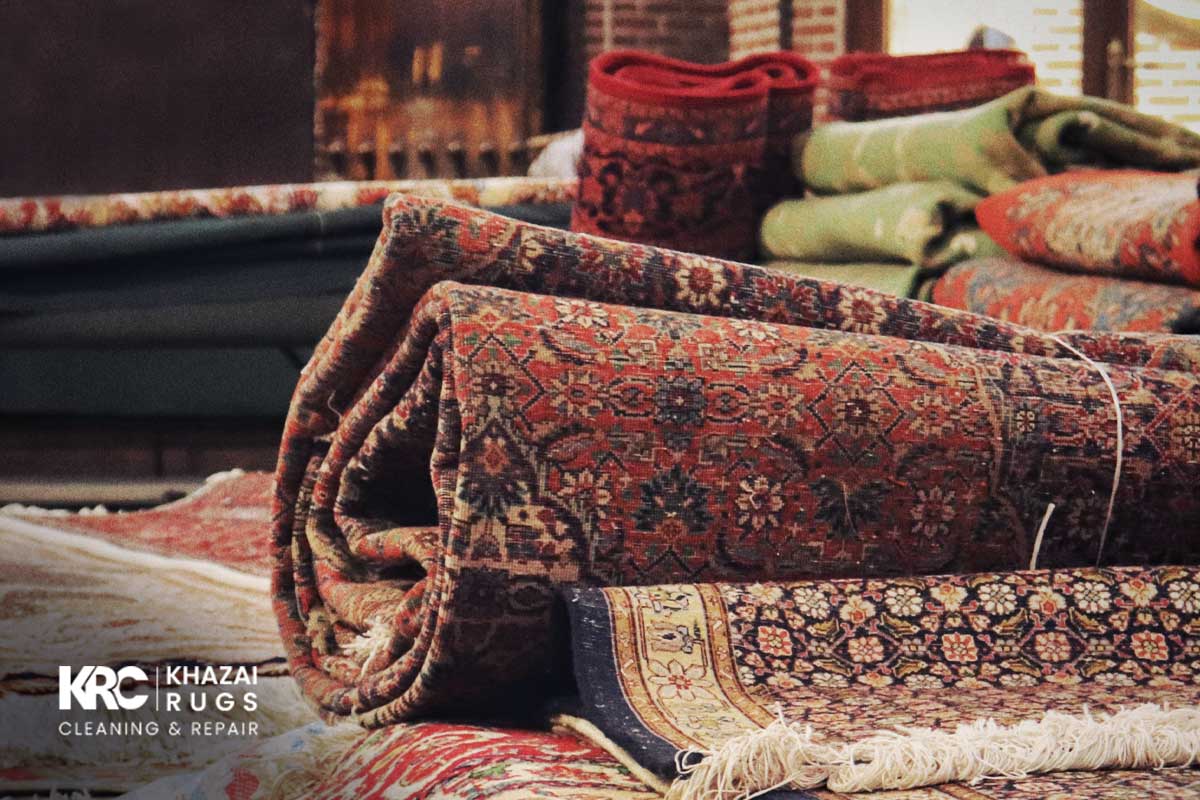Antique rugs aren’t just floor coverings—they’re pieces of history. Each one tells a story, woven by artisans who spent months, sometimes years, creating them by hand. If you’ve got an old rug at home, maybe passed down through generations or found at a flea market, you might be wondering: Is this an antique?
Knowing how to identify an antique rug can help you understand its value, craftsmanship, and history. Whether you’re a collector, a homeowner, or just curious, learning how to identify an antique rug is a skill worth having. Let’s break it down in a simple, easy-to-follow way.
What Makes a Rug Antique?
A rug needs to be at least 100 years old to be considered antique. If it’s between 50 and 99 years old, it’s called vintage. Anything newer is just a regular rug.
But there’s more to it than age. True antique rugs are handmade, use natural dyes, and have unique details you won’t find in mass-produced rugs. These rugs were crafted in places like Persia, Turkey, the Caucasus, and China, where rug-making has been an art for centuries.
Many antique rugs were woven for special occasions—weddings, prayer ceremonies, or even as royal gifts. Some were even used as currency in ancient markets! That’s why these rugs have a depth of history that makes them more than just decor.
If you want to identify an antique rug, you’ll need to pay attention to key details like weaving techniques, dyes, and natural wear.
Quickest way to identify an antique rug
One of the quickest ways to identify an antique rug? Turn it over.
Signs of a Hand-Knotted (Antique) Rug:
- The knots aren’t perfectly uniform—each one is slightly different because they were tied by hand.
- The pattern on the back looks almost as clear as the front, just a little faded.
- The texture feels slightly uneven and rough.
Signs of a Machine-Made (Modern) Rug:
- The pattern on the back looks too perfect, almost like it was printed.
- The knots are identical and evenly spaced.
- There might be a layer of glue or backing holding it all together.
If you notice slight imperfections in the weave, that’s a good thing—it usually means it was made by hand. This is one of the easiest ways to identify an antique rug without expert knowledge.
Identify an Antique Rug by its color
Antique rugs use natural dyes from plants, minerals, and even insects. These dyes age beautifully and fade softly over time.
How to Tell If Your Rug Has Natural Dyes:
- The colors aren’t perfectly even—they have slight variations.
- The fading looks soft and natural, especially in high-traffic areas.
- If you fold the rug, the color changes subtly in different lighting.
Quick Dye Tests:
- Rub Test: Take a damp white cloth and rub a small section. If the color rubs off, it’s likely a synthetic dye (which means it’s probably not antique).
- Sunlight Test: Take the rug outside. Natural dyes look soft and rich, while synthetic dyes may seem too bright or harsh.
Many antique rugs have something called abrash, which is when the color slightly shifts within a section. This happens naturally when the weaver uses a slightly different batch of dye. If you see an abrash, it’s a great way to identify an antique rug.
Identify an antique rug by its fringe
The fringe of a rug can tell you a lot about its authenticity and is another key detail when you want to identify an antique rug.
Real Antique Rugs:
- The fringe is part of the rug itself, not something sewn on later.
- It’s made from hand-spun wool, cotton, or silk and may look slightly uneven.
- Over time, the fringe may have worn down naturally, giving it an aged look.
Modern or Fake Antique Rugs:
- The fringe looks sewn or glued on.
- It appears too perfect or uniform as if it were machine-made.
- Some rugs are even distressed artificially to look older than they really are!
If the fringe is woven into the rug’s foundation, you’re probably looking at an authentic antique rug.
The Texture Test in Antique Rugs
Older rugs were made with natural fibers like wool, silk, or cotton. Here’s what to look for:
- Wool Rugs (Most common) – Soft, slightly oily (from natural lanolin), and warm to the touch.
- Silk Rugs – Luxuriously smooth with a shiny finish, often with intricate designs.
- Cotton Rugs – Usually used as the foundation, making the rug more durable.
- Synthetic Rugs – If the rug feels too smooth or plasticky, it’s likely not antique.
Quick Fiber Test:
Burn a tiny fiber from an unnoticeable spot.
- Natural fibers (wool, silk, cotton): Smell like burnt hair.
- Synthetic fibers: Smell like burning plastic.
If you’re trying to identify an antique rug, the material can strongly indicate authenticity.
Signs of Wear of an Antique Rug
Antique rugs age gracefully. Here’s what to check for:
- Fading in high-traffic areas – But in a way that looks natural.
- Frayed edges – Worn but not falling apart.
- Soft fibers – Well-worn but still durable.
- Low pile in certain spots – Years of foot traffic can wear down the fibers.
Some dealers try to “fake” aging by distressing new rugs with chemicals. A genuine antique will feel soft and broken in, not stiff or brittle.
The Sheen Test:
A true antique rug has a patina—a soft glow that develops over decades of use. If your rug has a subtle sheen, it’s likely the real deal.
Still Not Sure? Get a Professional Opinion
If you’re still unsure about how to identify an antique rug, getting an expert opinion is a smart move. A professional can:
- Confirm the rug’s age and origin.
- Assess its condition and value.
- Give advice on cleaning and preservation.
At Khazai Rug Cleaning , we specialize in antique rug restoration and rug appraisal. If you need expert guidance, we’re here to help!
Antique rugs have a charm that modern rugs just can’t match. Whether you’re a collector, an enthusiast, or just someone who loves the look of old, handcrafted rugs, knowing how to identify an antique rug is key. Keep an eye out for natural dyes, hand-knotted weaves, aged fringes, and a soft, lived-in feel, and you’ll be well on your way to spotting an actual piece of history.




